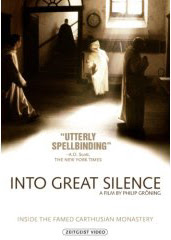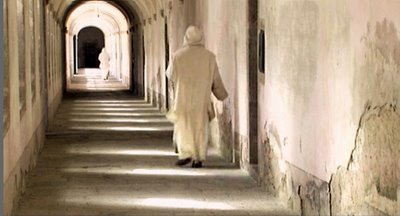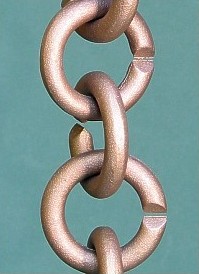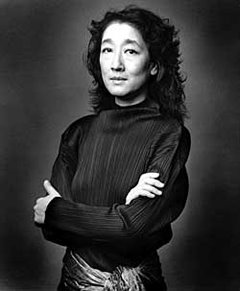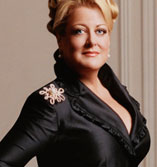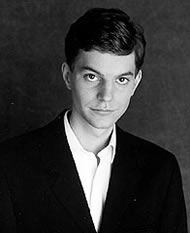Last month | Next monthClassical Month in Washington is a monthly feature. If there are concerts you would like to see included on our schedule, send your suggestions by e-mail (ionarts at gmail dot com). Happy listening!March 1, 2008 (Sat)
1:30 and 7:30 pmNew York City BalletKennedy Center Opera House
March 1, 2008 (Sat)
7:30 pmNed Rorem,
Our TownCatholic University School of MusicMarch 1, 2008 (Sat)
7:30 pmMozart,
Die Entführung aus dem SerailDirected by François Loup
Opera Bel CantantiRandolph Road Theater
March 1, 2008 (Sat)
8 pmJonathan Dove,
Tobias and the AngelOpera Vivente (Baltimore, Md.)
March 1, 2008 (Sat)
8 pmLawrence Brownlee, tenor
Jewish Community Center of Greater Washington (Rockville, Md.)
March 1, 2008 (Sat)
8 pmBaltimore Symphony OrchestraCharlie Chaplin,
City LightsMeyerhoff Symphony Hall (Baltimore, Md.)
March 1, 2008 (Sat)
8 pmFairfax Symphony OrchestraWith Amanda Gosier, soprano
George Mason University Center for the Arts
March 2, 2008 (Sun)
1 and 3 pmFamily Concert: Peter and the WolfNational Symphony Orchestra
Kennedy Center Concert Hall
March 2, 2008 (Sun)
1:30 and 7:30 pmNew York City BalletKennedy Center Opera House
March 2, 2008 (Sun)
3 pmJonathan Dove,
Tobias and the AngelOpera Vivente (Baltimore, Md.)
March 2, 2008 (Sun)
3 pmBaltimore Symphony OrchestraCharlie Chaplin,
City LightsMeyerhoff Symphony Hall (Baltimore, Md.)
March 2, 2008 (Sun)
3 pmQuartetto Gelato [FREE]
National Academy of Sciences (2100 C Street NW)
March 2, 2008 (Sun)
3 pmMozart,
Die Entführung aus dem SerailDirected by François Loup
Opera Bel CantantiRandolph Road Theater
March 2, 2008 (Sun)
4 pmDominick Argento,
Evensong: Of Love and AngelsWorld premiere (Centennial of Washington National Cathedral)
With Elizabeth Futral, soprano
Cathedral Choral SocietyWashington National Cathedral
March 2, 2008 (Sun)
4 pmVerdehr Trio (violin, clarinet, and piano) [FREE]
Phillips CollectionMarch 2, 2008 (Sun)
6 pmNSO Young Soloists' Competition [FREE]
Kennedy Center Concert Hall
March 2, 2008 (Sun)
6:30 pmNational Cathedral Choir of Men and Girls [FREE]
Music by Gregorio Allegri, Domenico Scarlatti, and Tallis
National Gallery of ArtMarch 2, 2008 (Sun)
7:30 pmTallis Scholars: Masterpieces from Spain and Portugal
Clarice Smith Performing Arts Center
March 3, 2008 (Mon)
8 pmJoshua Bell (violin) and Jeremy Denk (piano)WPASKennedy Center Concert Hall
March 3, 2008 (Mon)
8 pmLawrence Brownlee, tenor
Jewish Community Center of Greater Washington (Rockville, Md.)
March 3, 2008 (Mon)
8 pmPaul Potts, tenorLisner Auditorium
March 5, 2008 (Wed)
12:10 pmWomen of the National Gallery Vocal Arts Ensemble [FREE]
Music by Hildegard von Bingen and other women composers
National Gallery of ArtMarch 5, 2008 (Wed)
7:30 pmComposer in Conversation: Christopher RouseMeyerhoff Symphony Hall (Baltimore, Md.)
March 6, 2008 (Thu)
7 pmNational Symphony OrchestraWith Ingrid Fliter (piano)
Kennedy Center Concert Hall
March 6, 2008 (Thu)
7:30 pmJenny Lin, piano [FREE]
Embassy of Austria
March 6, 2008 (Thu)
8 pmBaltimore Symphony OrchestraMusic by Rouse, Beethoven
Music Center at Strathmore
March 7, 2008 (Fri)
7:30 pmMozart,
Die Entführung aus dem SerailDirected by François Loup
Opera Bel CantantiRandolph Road Theater
March 7, 2008 (Fri)
7:30 pmIsabel Leonard (mezzo-soprano) and Brian Zeger (piano)Vocal Arts Society
Embassy of Austria
March 7, 2008 (Fri)
7:30 pmMayuko Kamio, violinMansion at Strathmore
March 7, 2008 (Fri)
8 pmNational Symphony OrchestraWith Ingrid Fliter (piano)
Kennedy Center Concert Hall
March 7, 2008 (Fri)
8 pmBaltimore Symphony OrchestraMusic by Rouse, Beethoven
Meyerhoff Symphony Hall (Baltimore, Md.)
March 7, 2008 (Fri)
8 pmFlorestan Trio [FREE]
Music by Beethoven, Ives, Arensky
Library of CongressMarch 7, 2008 (Fri)
8 pmGryphon TrioBarns at Wolf Trap
March 7, 2008 (Fri)
8 pmMorris Palter, percussion [FREE]
Clarice Smith Performing Arts Center
March 8, 2008 (Sat)
3 pmJi Hye Jung, marimba [FREE]
Shriver Hall Discovery Series
Baltimore Museum of Art
March 8, 2008 (Sat)
3 pmMax Linder Ciné-Concert [FREE]
Screening of short films, with live music by Octuor de France
National Gallery of Art
March 8, 2008 (Sat)
7:30 pmMozart,
Die Entführung aus dem SerailDirected by François Loup
Opera Bel CantantiRandolph Road Theater
March 8, 2008 (Sat)
8 pmNational Symphony OrchestraWith Ingrid Fliter (piano)
Kennedy Center Concert Hall
March 8, 2008 (Sat)
8 pmBaltimore Symphony OrchestraMusic by Rouse, Beethoven
Meyerhoff Symphony Hall (Baltimore, Md.)
March 8, 2008 (Sat)
8 pmLeft Bank Concert SocietyMusic by Finzi (Oboe Quartet), Kirchner, Janáček
Clarice Smith Performing Arts Center
March 9, 2008 (Sun)
3 pmThe Genesis of Don Giovanni
Excerpts from Gazzaniga,
Il Convitato di Pietra; Melani,
L'Empio PunitoOpera LafayetteSt. Paul's Lutheran Church (4900 Connecticut Avenue NW)
March 9, 2008 (Sun)
3 pmBaltimore Symphony OrchestraMusic by Rouse, Beethoven
Meyerhoff Symphony Hall (Baltimore, Md.)
March 9, 2008 (Sun)
3 pmMozart,
Die Entführung aus dem SerailDirected by François Loup
Opera Bel CantantiRandolph Road Theater
March 9, 2008 (Sun)
4 pmPiano Society of Greater Washington: Recital [FREE]
Calvary Lutheran Church (Silver Spring, Md.)
March 9, 2008 (Sun)
4 pmJonathan Korth, piano [FREE]
Phillips CollectionMarch 9, 2008 (Sun)
6:30 pmOctuor de France [FREE]
Music by Beethoven, Ravel
National Gallery of ArtMarch 9, 2008 (Sun)
7:30 pmMasterworks of Four CenturiesQuartets by Zemlinsky and Schönberg
Smithsonian Chamber Players
Smithsonian Castle
March 9, 2008 (Sun)
8 pmFine Arts Quartet and Cristina Ortiz, piano
Friends of MusicDumbarton Oaks
March 10, 2008 (Mon)
7:30 pmDaniel Bernard Roumain, violinMansion at Strathmore
March 10, 2008 (Mon)
8 pmFine Arts Quartet and Cristina Ortiz, piano
Friends of MusicDumbarton Oaks
March 11, 2008 (Tue)
8 pmChamber Orchestra of Philadelphia
La Maison FrançaiseMarch 11, 2008 (Tue)
8 pmLang Lang, pianoWPASKennedy Center Concert Hall
March 12, 2008 (Wed)
12:10 pmKathleen Shimeta, mezzo-soprano [FREE]
Music by Gena Branscome
National Gallery of ArtMarch 12, 2008 (Wed)
7:30 pmClassical Conversation with Miles HoffmanMansion at Strathmore
March 12, 2008 (Wed)
8 pmYundi Li, pianoWPASMusic Center at Strathmore
March 12, 2008 (Wed)
8 pmCamerata Interamericana [FREE]
Library of CongressMarch 12, 2008 (Wed)
8 pmMozart,
Die ZauberflötePeabody Chamber OperaFriedberg Hall, Peabody Institute
March 13, 2008 (Thu)
7 pmNational Symphony OrchestraWith Alban Gerhardt, cello
Kennedy Center Concert Hall
March 13, 2008 (Thu)
8 pmMozart,
Die ZauberflötePeabody Chamber OperaFriedberg Hall, Peabody Institute
March 13, 2008 (Thu)
8 pmCuarteto Latinoamericano [FREE]
Library of CongressMarch 13, 2008 (Thu)
8 pmDaniel Bernard Roumain,
One Loss PlusClarice Smith Performing Arts Center
March 14, 2008 (Fri)
8 pmSchubert FestivalAuryn Quartet, Polina Leschenko (piano), and Ferdinand Erblich (viola)
Gaston Hall, Georgetown University
March 14, 2008 (Fri)
8 pmMozart,
Die ZauberflötePeabody Chamber OperaFriedberg Hall, Peabody Institute
March 14, 2008 (Fri)
8 pmNational Symphony OrchestraWith Alban Gerhardt, cello
Kennedy Center Concert Hall
March 14, 2008 (Fri)
8 pmPost-Classical Ensemble [FREE]
Library of CongressMarch 15, 2008 (Sat)
7 pmWagner,
Flying DutchmanWashington National OperaKennedy Center Opera House
March 15, 2008 (Sat)
7:30 pmMatthias Soucek, piano
Embassy SeriesEmbassy of Austria
March 15, 2008 (Sat)
8 pmSchubert FestivalAuryn Quartet, Polina Leschenko (piano), and Ferdinand Erblich (viola)
Gaston Hall, Georgetown University
March 15, 2008 (Sat)
8 pmDeath and Resurrection (Music by MacMillan and Schütz)
Cantate Chamber SingersSt. John's Norwood Parish (Chevy Chase, Md.)
March 15, 2008 (Sat)
8 pmMozart,
Die ZauberflötePeabody Chamber OperaFriedberg Hall, Peabody Institute
March 15, 2008 (Sat)
8 pmAmelia Piano Trio
Dumbarton ConcertsMarch 15, 2008 (Sat)
8 pmNational Symphony OrchestraWith Alban Gerhardt, cello
Kennedy Center Concert Hall
March 15, 2008 (Sat)
8 pmNational Philharmonic: Bach, St. Matthew PassionMusic Center at Strathmore
March 16, 2008 (Sun)
3 pmDvořák, Stabat MaterChoral Arts Society
Kennedy Center Concert Hall
March 16, 2008 (Sun)
3 pmMikhail Svetlov, baritone
Mousetrap Concert Series (Washington Grove, Md.)
March 16, 2008 (Sun)
4 pmJ. S. Bach,
St. John PassionChoirs of Washington National Cathedral
Washington National CathedralMarch 16, 2008 (Sun)
4 pmMichael Nicolella, guitar [FREE]
Phillips CollectionMarch 16, 2008 (Sun)
5:30 pmPierre-Laurent Aimard, pianoMusic by Bach, Schoenberg, Beethoven
Shriver Hall (Baltimore, Md.)
March 16, 2008 (Sun)
6:30 pmParisii Quartet and Jérôme Corréas (baritone) [FREE]
Fauré,
La Bonne chansonNational Gallery of ArtMarch 16, 2008 (Sun)
8 pmSchubert FestivalAuryn Quartet, Polina Leschenko (piano), and Ferdinand Erblich (viola)
Gaston Hall, Georgetown University
March 17, 2008 (Mon)
8 pmAlfred Brendel, pianoWPASMusic Center at Strathmore
March 18, 2008 (Tue)
6:30 pmInterview with Alfred BrendelEmbassy of Austria
March 18, 2008 (Tue)
7:30 pmSergey Khachatryan (violin) and Lusine Khachatryan (piano)WPAS
Sidney Harman Hall
March 18, 2008 (Tue)
7:30 pmMusicians from Marlboro II [FREE]
Carter, Oboe Quartet
Freer Gallery of ArtMarch 19, 2008 (Wed)
12:10 pmTapestry (female vocal quartet) [FREE]
National Gallery of ArtMarch 20, 2008 (Thu)
7:30 pmWagner,
Flying DutchmanWashington National OperaKennedy Center Opera House
March 22, 2008 (Sat)
7 pmThe Beggar's Opera (arr. Benjamin Britten)
Châteauville Foundation (Castleton Farms, Va.)
March 23, 2008 (Sun)
4 pmThe Beggar's Opera (arr. Benjamin Britten)
Châteauville Foundation (Castleton Farms, Va.)
March 23, 2008 (Sun)
4 pmYuliya Gorenman, piano [FREE]
Phillips CollectionMarch 23, 2008 (Sun)
6:30 pmHarvard Glee Club [FREE]
National Gallery of ArtMarch 25, 2008 (Tue)
7:30 pmWagner,
Flying DutchmanWashington National OperaKennedy Center Opera House
March 25, 2008 (Tue)
8 pmNikolaj Znaider (violin) and Robert Kulek (piano)Tuesday Evening Concert Series
Cabell Hall, University of Virginia (Charlottesville, Va.)
March 26, 2008 (Wed)
7:30 pmBetty Hauck (viola), Ben Redwine (clarinet), and Carl Banner (piano)
Washington Musica VivaDennis and Phillip Ratner Museum (Bethesda, Md.)
March 27, 2008 (Thu)
7 pmNational Symphony OrchestraWith Louis Lortie, piano
Kennedy Center Concert Hall
March 27, 2008 (Thu)
7:30 pmSara Daneshpour, pianoMansion at Strathmore
March 28, 2008 (Fri)
8 pmNational Symphony OrchestraWith Louis Lortie, piano
Kennedy Center Concert Hall
March 28, 2008 (Fri)
8 pmJupiter QuartetWith Roger Tapping and Natasha Brofsky (Mendelssohn, Brahms, Britten)
Corcoran Gallery of Art
March 28, 2008 (Fri)
8 pmA Many-Colored Dream: Music of Franz SchubertUniversity of Maryland School of Music (Scholarship Benefit)
Clarice Smith Performing Arts Center
March 29, 2008 (Sat)
7 pmVerdi,
RigolettoWashington National OperaKennedy Center Opera House
March 29, 2008 (Sat)
8 pmNational Symphony OrchestraWith Louis Lortie, piano
Kennedy Center Concert Hall
March 29, 2008 (Sat)
8 pmBaltimore Symphony OrchestraWith André Watts (Brahms, 2nd piano concerto)
Music Center at Strathmore
March 29, 2008 (Sat)
8 pmUniversity of Maryland SymphonyMusic by Mendelssohn and Bruckner (Heinz Fricke, guest conductor)
Clarice Smith Performing Arts Center
March 29, 2008 (Sat)
8 pmGounod,
Roméo et JulietteBaltimore Opera
March 29, 2008 (Sat)
8 pmAxelrod QuartetMusic by Haydn, Britten, Beethoven
Grand Salon, Renwick Gallery
March 29, 2008 (Sat)
8 pmEast Village Opera Company (rock-opera crossover)
Lisner Auditorium
March 30, 2008 (Sun)
2 pmWagner,
Flying DutchmanWashington National OperaKennedy Center Opera House
March 30, 2008 (Sun)
3 pmBrooke Evers (soprano) and Michael Gallant (piano)Vocal Arts Society
Westmoreland Church
March 30, 2008 (Sun)
3 pmWashington Bach Consort: Many Moods of Bach
Sidney Harman Hall
March 30, 2008 (Sun)
3 pmDivertimento String Trio
FAESCongregation Beth-El (Bethesda, Md.)
March 30, 2008 (Sun)
4 pmMark Crayton (countertenor), Laura Handler (cello), and James Janssen (piano) [FREE]
Phillips CollectionMarch 30, 2008 (Sun)
6:30 pmElina Vähälä (violin) and Mika Rännäli (piano) [FREE]
Music by Copland, Debussy, Fauré, and Stravinsky
National Gallery of ArtMarch 30, 2008 (Sun)
7 pmHelsingborg Symphony Orchestra, The Eroica Effect
With Andrew Manze, conductor
George Mason University Center for the Arts
March 30, 2008 (Sun)
7:30 pmAxelrod QuartetMusic by Haydn, Britten, Beethoven
Grand Salon, Renwick Gallery
March 30, 2008 (Sun)
8 pmCavani Quartet
Jewish Community Center of Greater Washington (Rockville, Md.)
March 31, 2008 (Mon)
7 pmVerdi,
RigolettoWashington National OperaKennedy Center Opera House
March 31, 2008 (Mon)
8 pmNew Music, University of Maryland [FREE]
Clarice Smith Performing Arts Center
